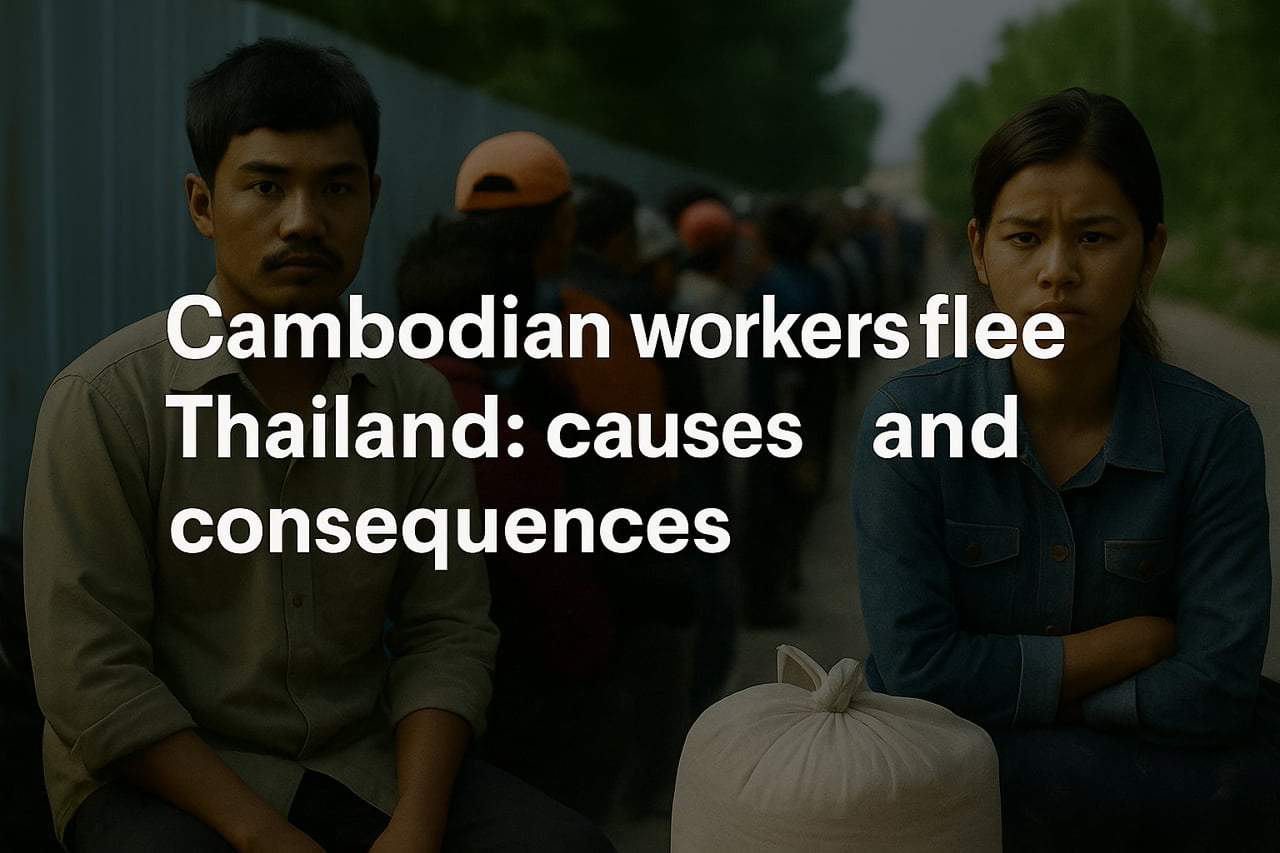
Cambodian Workers Flee Thailand: Causes and Economic Consequences
In late July 2025, a border crisis between Thailand and Cambodia triggered the sudden departure of an estimated 400,000 Cambodian migrant workers from Thailand.
Background: A Long-Standing Border Dispute Escalates
Historical and Political Context
The immediate cause of the crisis was renewed military conflict along the Thai-Cambodian border, particularly near the disputed Preah Vihear temple area. This confrontation, rooted in colonial-era territorial disagreements, led to artillery exchanges and air strikes.
The result: at least 38 casualties, thousands displaced, and rising diplomatic tensions, including the withdrawal of ambassadors and the closure of several border checkpoints.
Why Are Cambodian Workers Fleeing?
Migrant workers in Thailand reported fears of violence, increasing discrimination, and anti-Cambodian sentiment. These fears were amplified by viral posts on social media and unverified threats. With little official reassurance, many chose to return home urgently — some on foot, others via overcrowded transport services.
Within five days, an estimated 400,000 Cambodians left Thailand, including 150,000 on the first day alone.
Economic Impact on Thailand
Thailand relied heavily on Cambodian migrant workers before the exodus:
- Official records show over 500,000 registered Cambodian workers, but unofficial estimates bring the total to between 1 and 1.2 million.
- In border provinces, Cambodians made up 70–80% of the labor force in key sectors such as agriculture, construction, and food processing.
- Their departure has caused a severe labor shortage, disrupting production and business operations nationwide.
- Thai authorities are now trying to recruit workers from Laos and Myanmar, but logistical and administrative constraints limit the speed and scale of this response.
Impact on Cambodia’s Economy
Cambodian workers in Thailand were sending home between 40 and 65 billion baht annually, which represented over 6.5% of Cambodia’s GDP.
Their sudden return has significantly reduced remittances, putting additional pressure on families already facing economic hardship. Many returnees arrive with debt, no immediate job prospects, and increasing dependence on local aid.
FAQ – Key Questions Answered
➤ What triggered the Cambodian workers’ exodus?
A violent military escalation along the Thai-Cambodian border in late July 2025 reignited long-standing territorial tensions.
➤ How many workers fled and how fast?
An estimated 400,000 left in five days, with 150,000 fleeing on the first day alone.
➤ Which Thai sectors are most affected?
Agriculture, construction, and food processing — especially in eastern provinces — are facing acute labor shortages.
➤ What is the cost to Thailand?
Severe disruptions to supply chains, delayed production, and growing recruitment costs. A full recovery may take months.
➤ And for Cambodia?
A sharp decline in remittances, rising unemployment among returnees, and mounting social instability in rural provinces.
➤ Were there targeted incidents against Cambodians in Thailand?
Yes, several cases of discrimination, harassment, and online hate speech were reported, contributing to the panic and mass return.
Sources
- The Pattaya News – August 4, 2025
- Reuters – July 30, 2025
- The Guardian – August 2, 2025
- Financial Times – July 31, 2025
- Vietnam Plus – August 3, 2025
- Nation Thailand – August 5, 2025
- Wikipedia – 2025 Cambodia–Thailand Border Conflict



